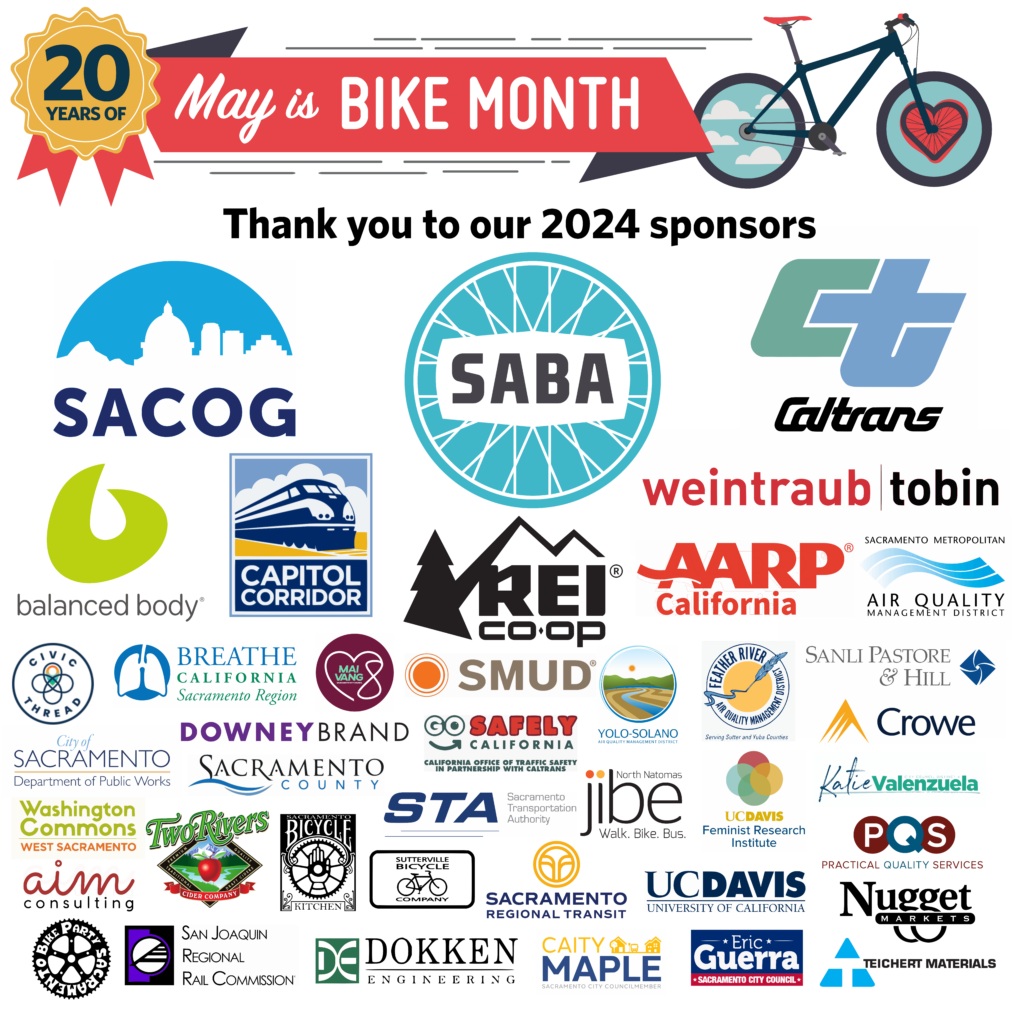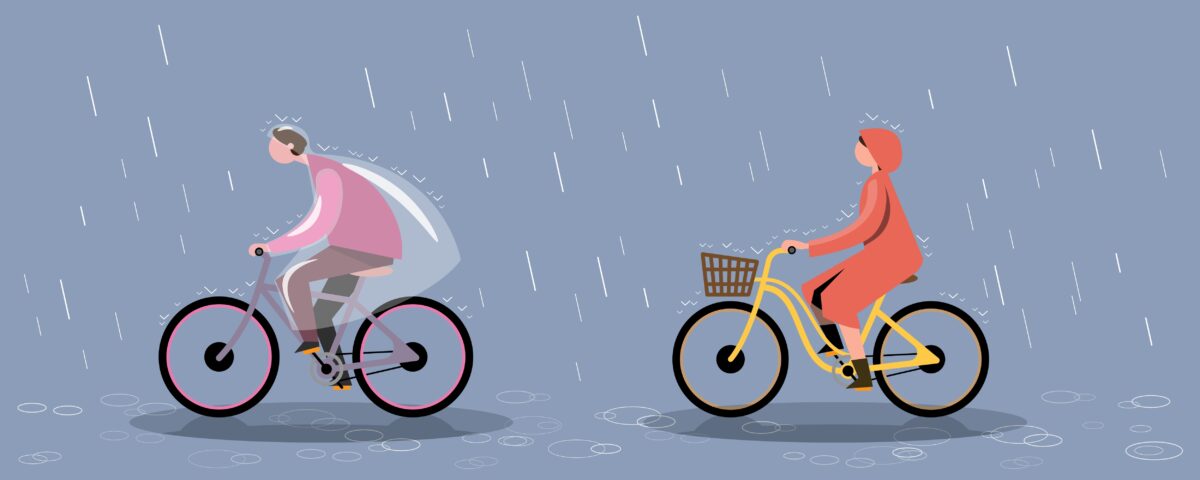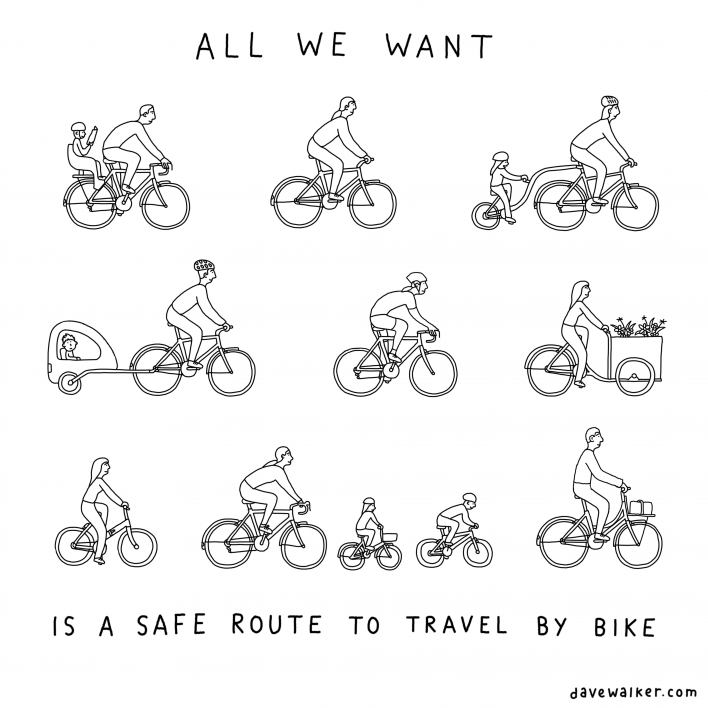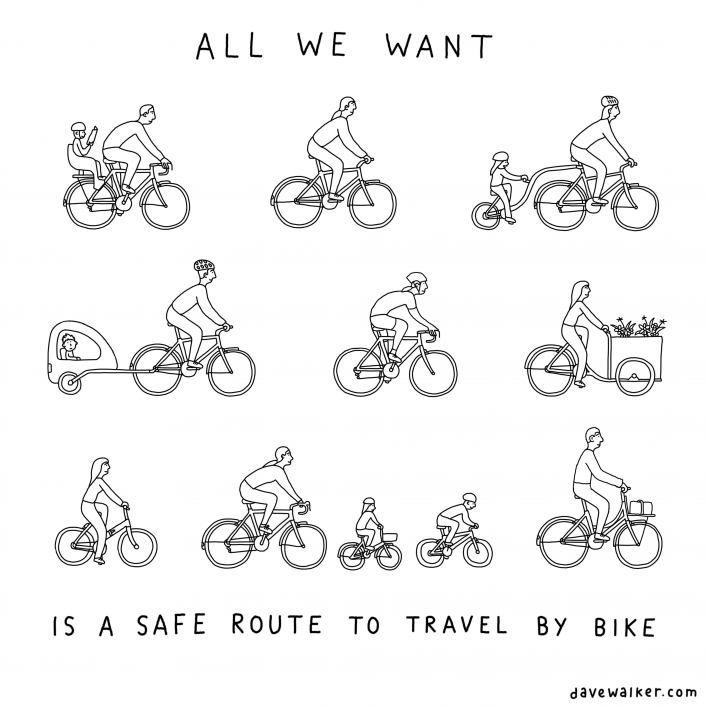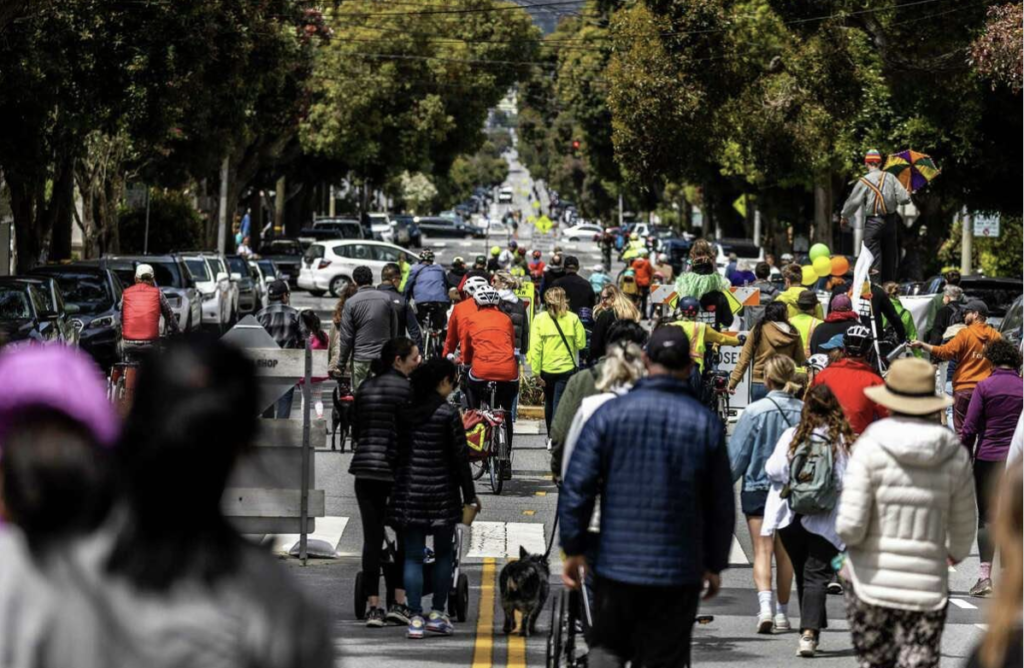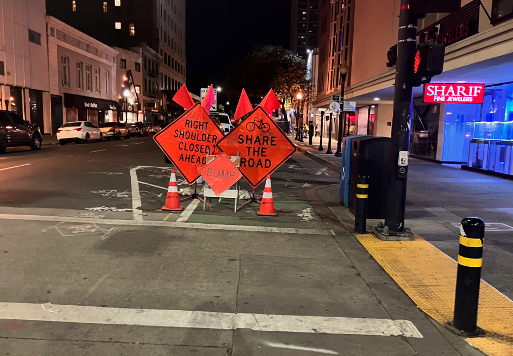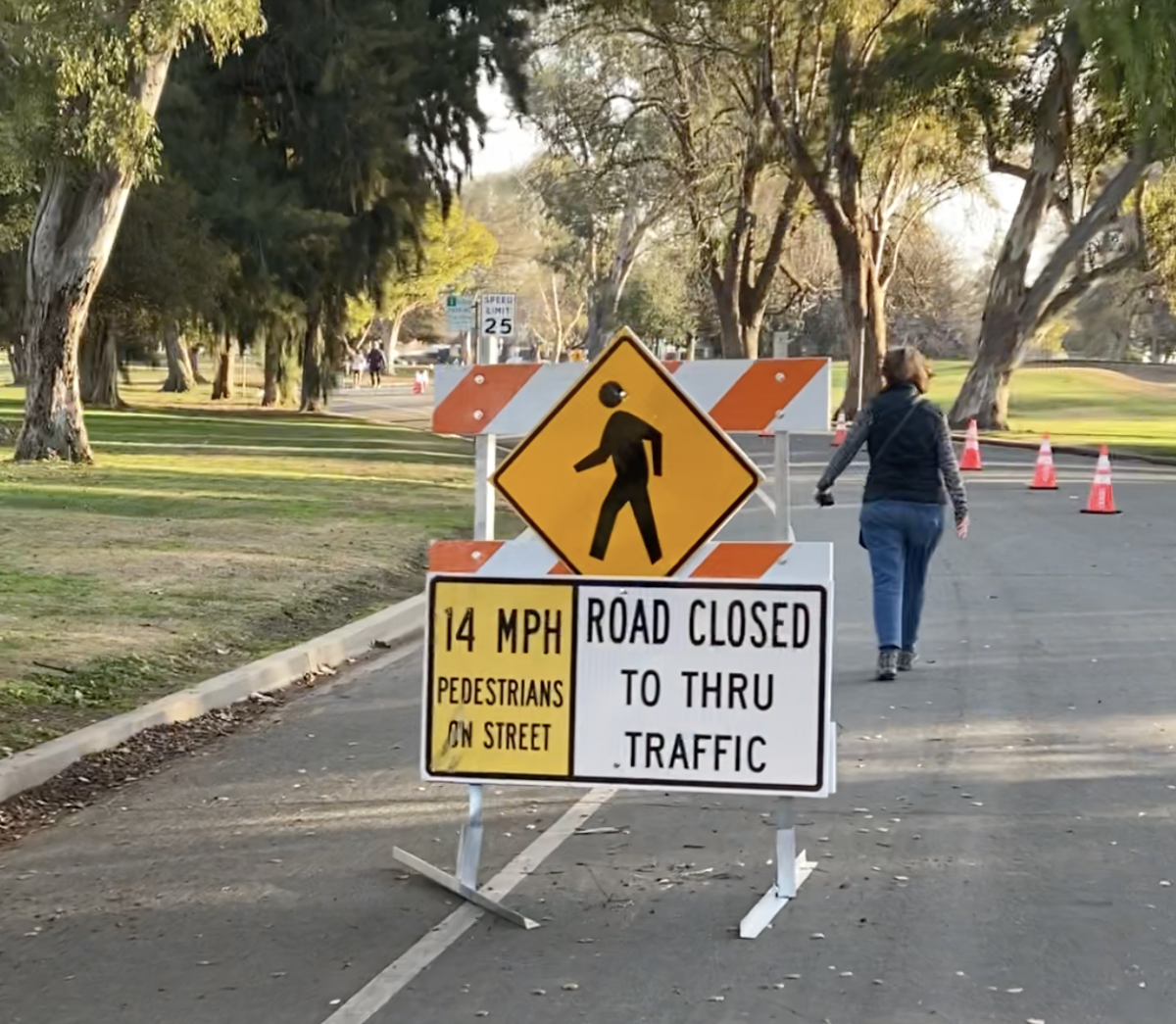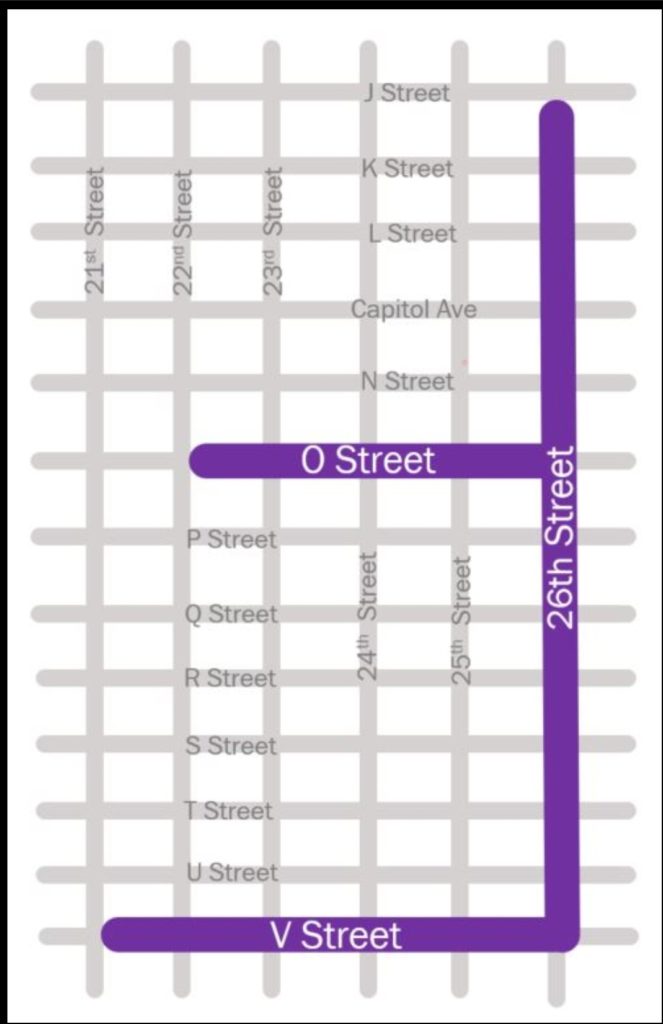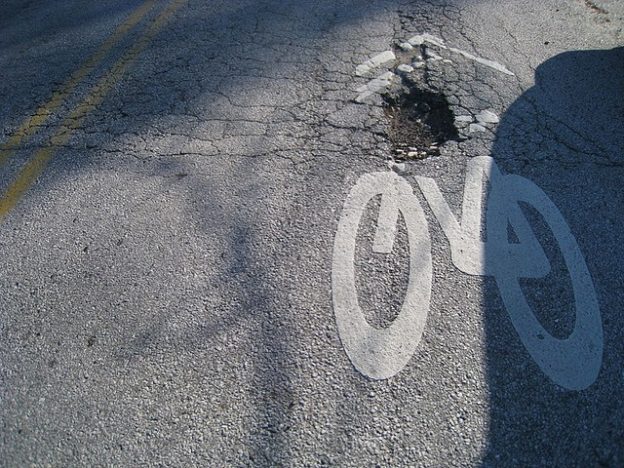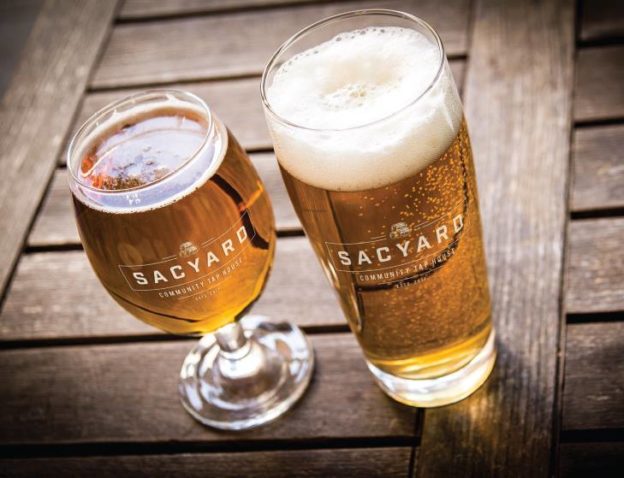May is Bike Month is just about here!
May is Bike Month is a campaign where we celebrate our local bike culture and encourage new and experienced riders to replace their car trips with bike trips. The average car trip to run errands is 1-3 miles. This is a distance easily bikeable by people of all skill levels. Bicycling saves you money and time, plus it’s good for the environment, great for your wellbeing, and supports bike advocacy in your region long-term! Help us help you, your city, and the environment by logging your rides manually or with the Love to Ride app this May.
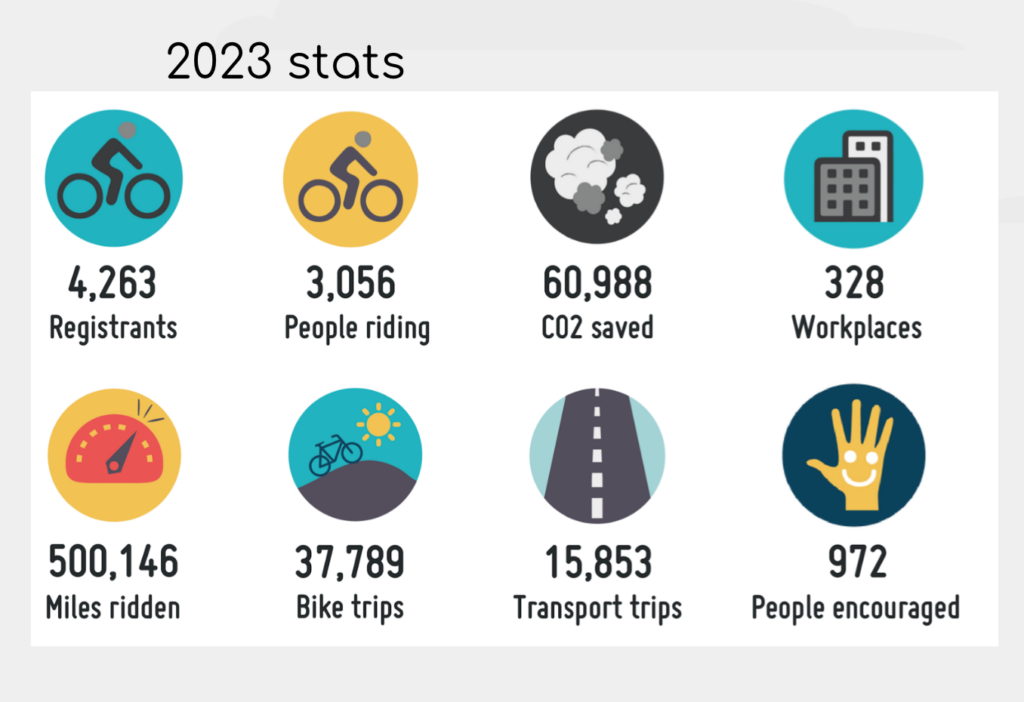
Register now at mayisbikemonth.com and log your rides in May to win bikes, t-shirts, gift cards, park passes and more! Riders who register before April 28th are entered to win a commemorative 20 Years of May is Bike Month t-shirt.
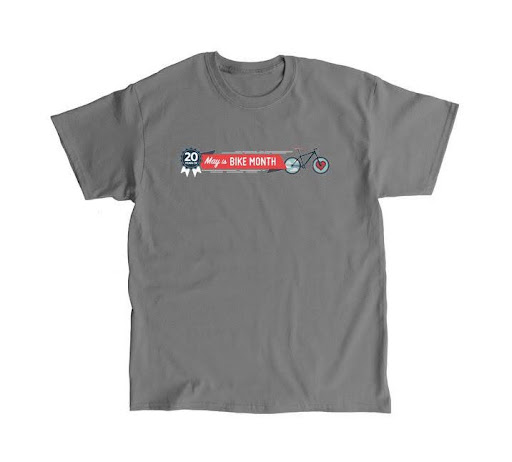
You can also participate and win prizes by playing May is Bike Month Social Media Bingo:


And, don’t forget to check out all the awesome events around the great Sacramento region in May. You can find events near you on the BikeSacRegion365 event calendar. Don’t miss the upcoming SABA hosted events for bike month 2024:
1. May is Bike Month Kick Off/Breathe Bike Festival, 4/28
Get a jumpstart to May and join SABA and Breathe California on April 28th 2024 from 11:00am-2:00pm at Riverfront and Mill Streets for the third annual May is Bike Month Kick Off/Breathe Bike Festival in West Sacramento. You’ll find family activities, safety demonstrations, e-bike test rides, local partners, helmet decorating, blender bikes, bike repairs and displays, May is Bike Month swag, and so much more! Bike Party Sacramento is DJing, with food from Chando’s Tacos. Bring your friends and family to enjoy the wonderful view of the river! Check the Breathe California event website and bikesacregion365.net event calendar for details about group rides leading into the event.
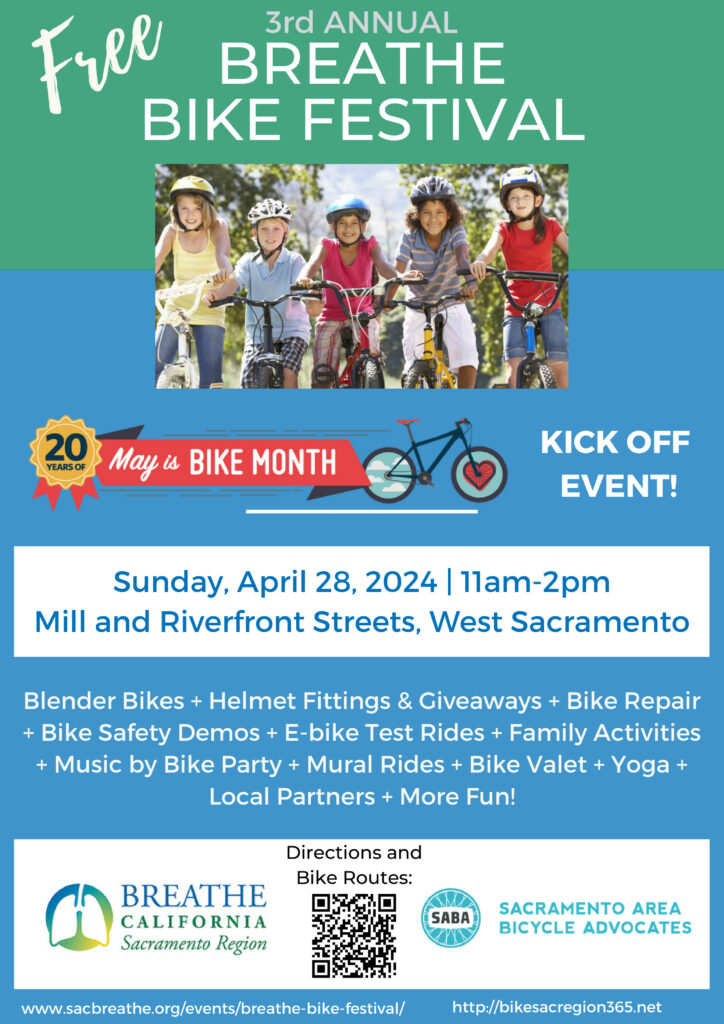
2. Biking While Black, 5/2
Join us for this important film screening at the Guild Theater in Oak Park on Thursday, May 2nd.
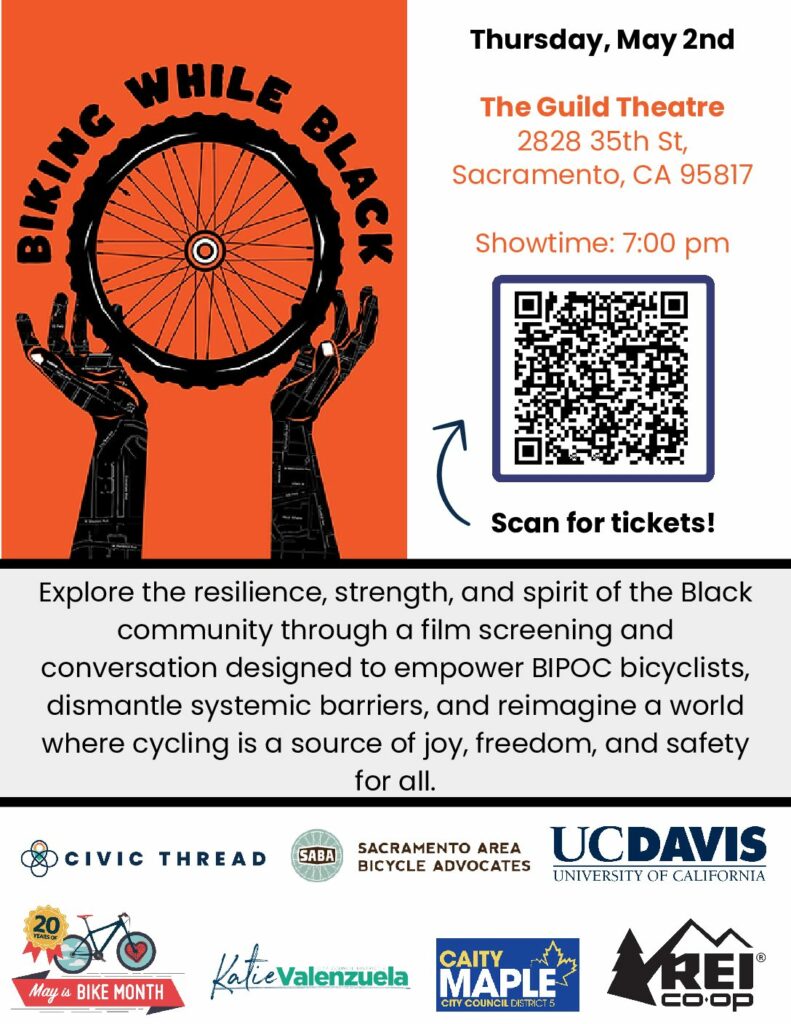
3. SABA Bike Swap+Sale+Show @ Two Rivers Cider, 5/11
Two Rivers Cider is hosting the SABA Bike Swap+Sale+Show fundraiser on May 11th, 2024 from 10am-2pm.
Join us at Two Rivers for vendor booths to swap and sell bike goods, a bike show (low rider, vintage [pre-1990], modern [post-1990], BMX, and people’s choice), plus food, drink, music, giveaways, and on-site bike repair and bike valet. Scan the flyer QR code or click here to sign up for a vendor table or to show a bike.

4. Mileage Madness, 5/11-5/19
SABA is hosting a competition mileage drive for May is Bike Month 2024: Mileage Madness!
The main goal of MiBM is getting people to choose biking over driving for transportation, and usually all prizes are for the number of trips overall – except for during Mileage Madness week! We are partnering with REI to have mileage, not trip, specific prizes for the week of 5/11/24-5/19/24. We will announce winners for most miles during the week for four categories: men, women, nonbinary, and teams, at the VeloRama party at Bike Dog West Sac on 5/19 (see flyer). This means groups can compete against other groups again for MiBM. If you haven’t already, create an account on mayisbikemonth.com and log your rides using the Love to Ride app or manually on the site (can also sync to Strava, or from RidewithGPS to Strava to Love to Ride).
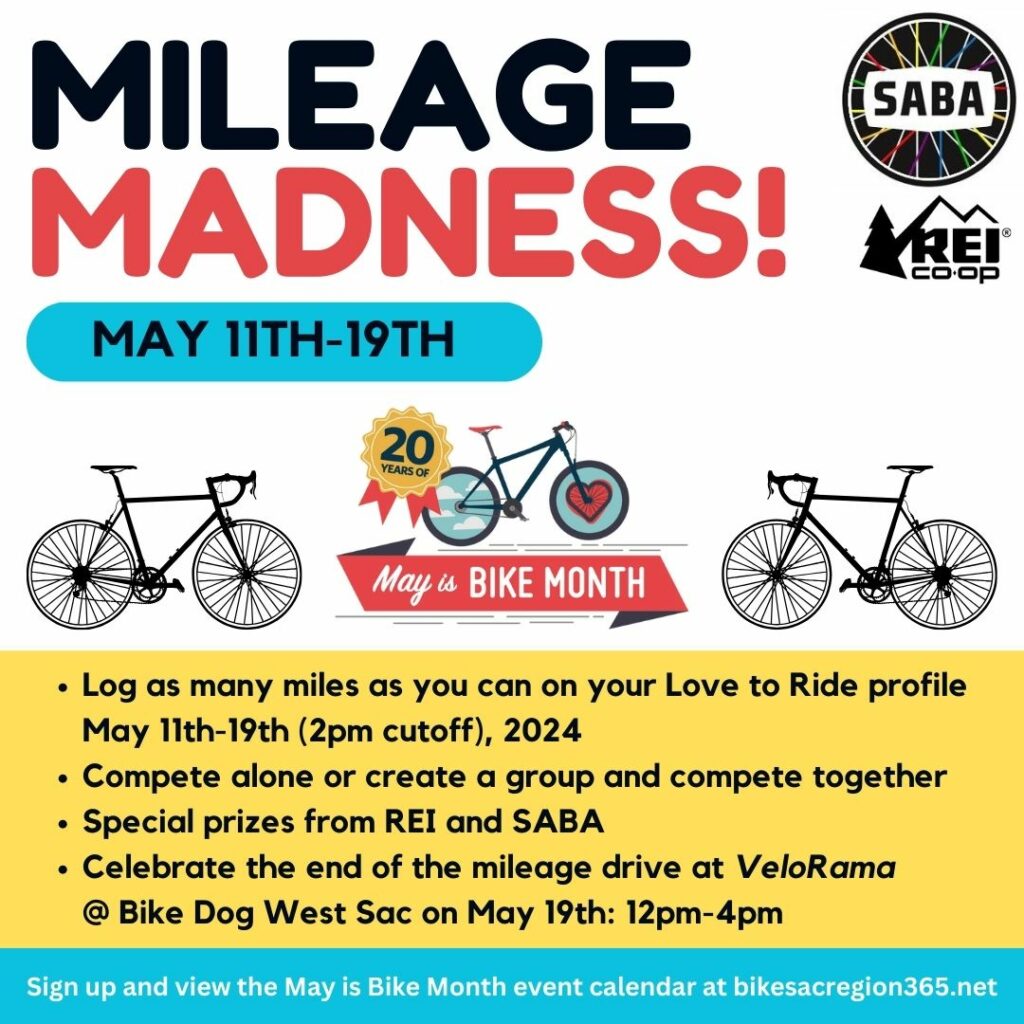
5. Cargo Bike Races at Township 9 Park, 5/18
Join us for some wild and whacky cargo bike races! Type 2 fun right here!

6. VeloRama, 5/19
Join SABA and REI at Bike Dog West Sac on 5/19 for a party celebrating the end of Mileage Madness week. Vendors, DJ, REI perks and displays, food trucks, drinks, and more. Meet at Paco’s Midtown for a guided ride to the party! Check the BikeSacRegion365 calendar for details.
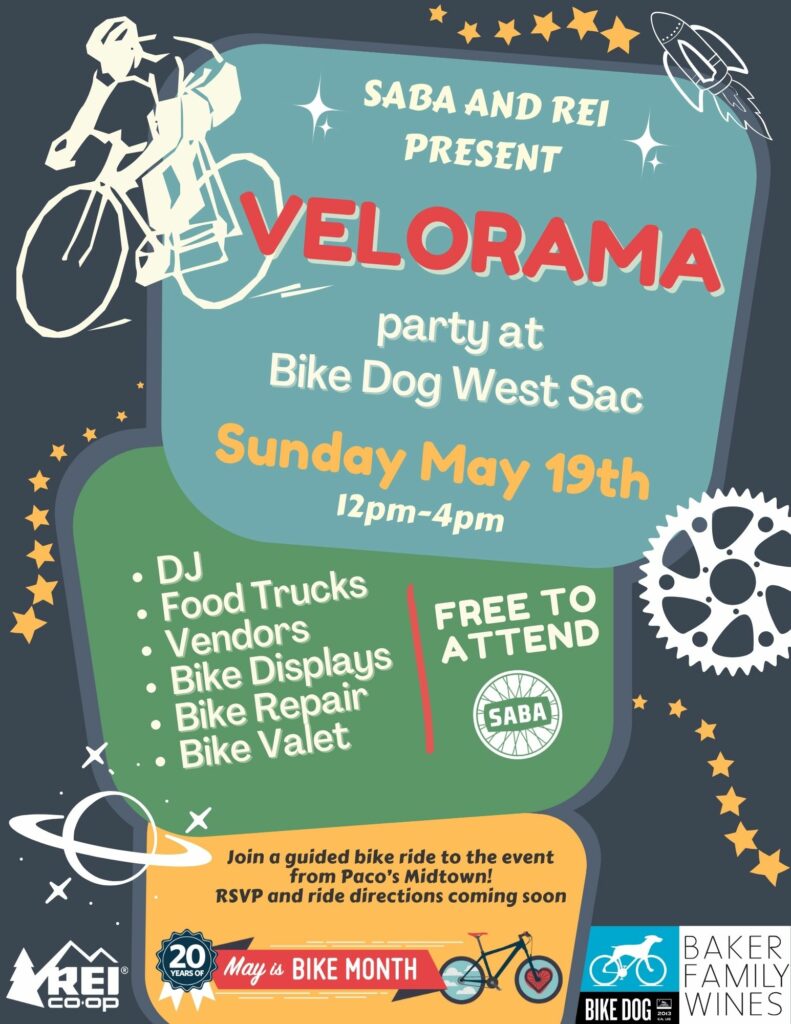
7. Folsom 2 Folsom: SABA Social Ride, 5/26
The Folsom to Folsom ride returns! Check the BikeSacRegion365 calendar for details later in the month.
8. May is Bike Month Afterparty, 5/31
Once it’s all said and done, cruise on over to join us for the Afterparty. Details forthcoming!
Prizes
Did we mention prizes? Oh heck yeah! Here’s a partial list:
- Grand prize: REI generation e1.2 mini cargo bike
- REI Co-op Cycles ADV 2.2 Gravel Bike (REI sweepstakes)
- REI gift cards
- Commemorative 20 years of May is Bike Month T-shirts (early bird prize drawing)
- Riverfox Train Railbike excursions
- MIBM Socks
- BMX bike donation from Sutterville Bicycle Company
- Rivet Cycle Works leather grips
- Rivet Cycle Works leather bike bag
- Bingo prizes (tbd)
- Mileage Madness prizes (tbd)
- Cargo Bike Race prizes (tbd)
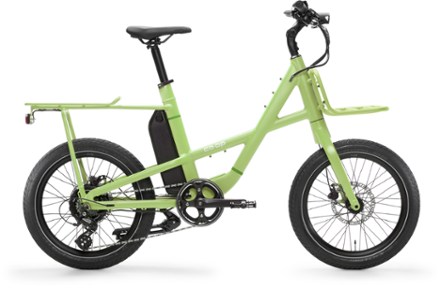
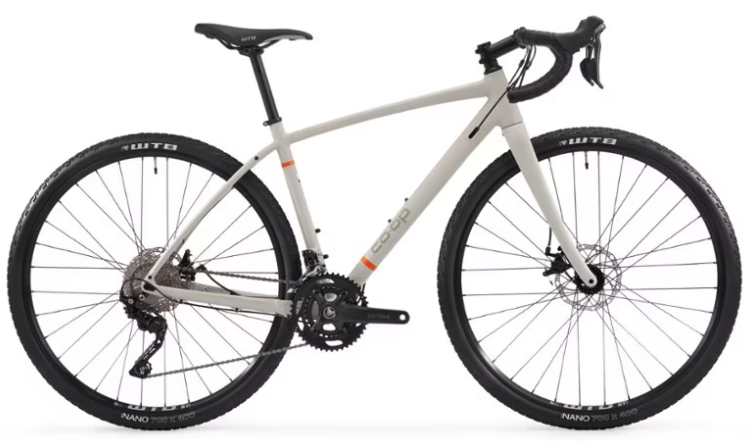
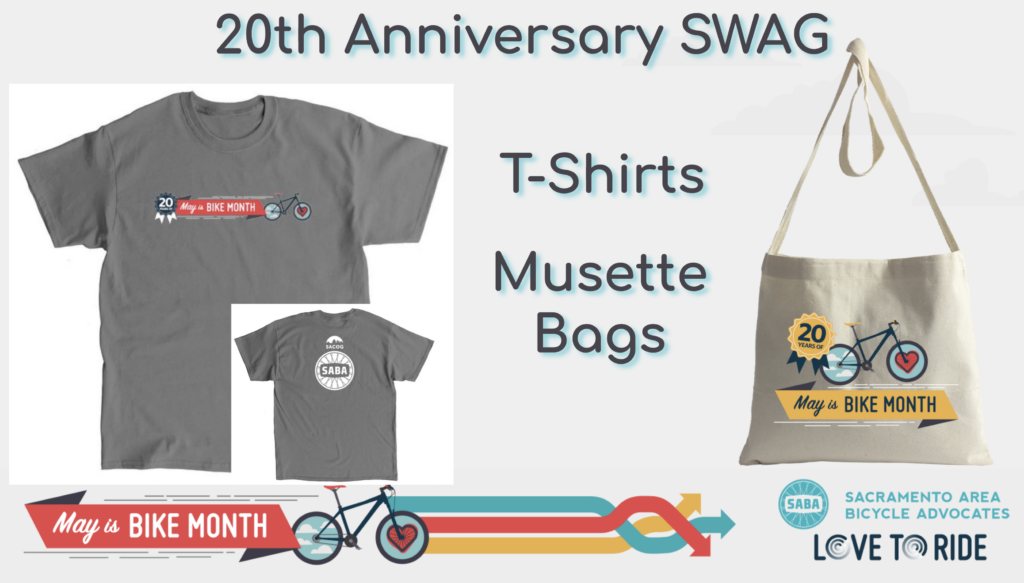

We hope to see you at one or many events around the region. Check the calendar as more events and energizer stations come online. Got a bike ride or event to add to the calendar? Enter it here!
Finally, we couldn’t make all this BikeLove happen without the support from our sponsors. We appreciate your support of active transportation which helps to create a safer, greener, more climate friendly Sacramento region! We wish everyone a GREAT May and most importantly, #getoutside and ride your bike!
